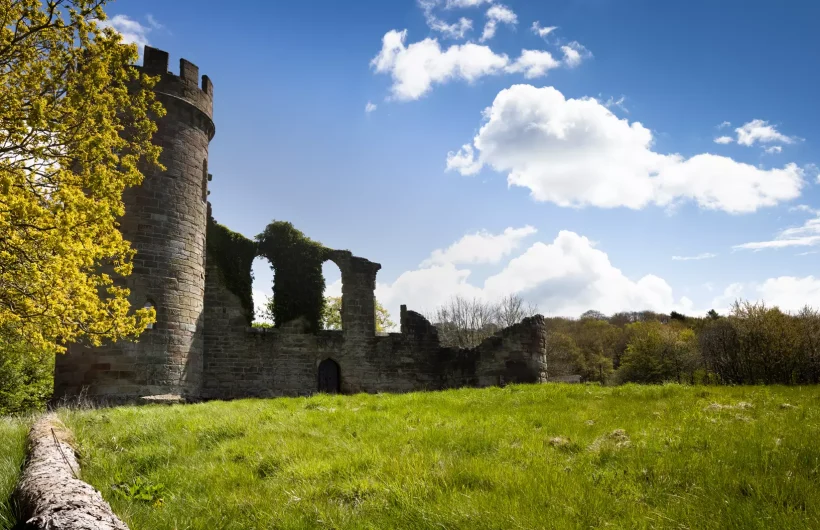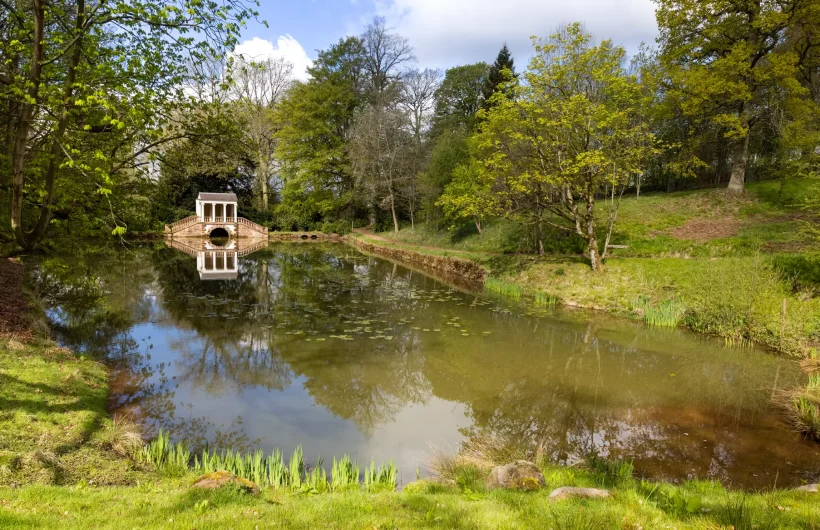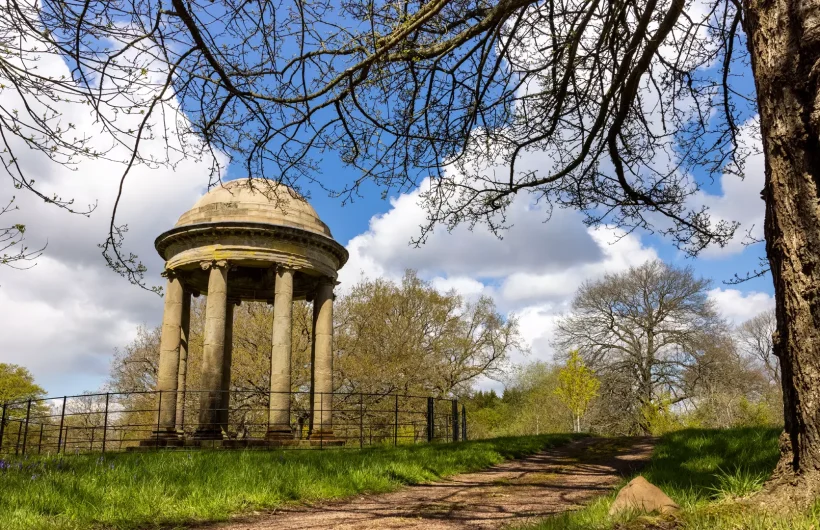Among the most famous of all eighteenth-century landscapes, George Lyttelton’s Park at Hagley was in its day, visited, viewed, and reviewed to great acclaim by some of the century’s most enlightened minds. Early in its creation English poet and critic Alexander Pope visiting as a family friend, contributed “designs for three garden buildings”, and declared a friendly ‘ownership’ of his favourite part of the Park. Similarly, Scottish poet James Thomson’s first visit inspired his deeply descriptive prose to praise both the Park’s natural beauty and its creator’s virtuous nature in the quintessential British nature poem The Seasons. Whilst pre-eminent art historian and critic Horace Walpole’s visit drew the statement: “I wore out my eyes with gazing, my feet with climbing, and my tongue and vocabulary with commending”.
As the century wore on and its reputation grew, Hagley’s iconic landscape began to attract international visitors. John Adams and Thomas Jefferson, the second and third American presidents, along with Russian Counts and Italian Princes all made pilgrimages to witness the beauties of Hagley’s “hallowed ground”. Today, after a century and a half’s neglect, but poised on the brink of a major restoration intent on reinstating the Park to its former glory, a growing influx of new visitors, both domestic and international, show this appeal is undoubtedly resurgent.



Hagley ‘s prestigious position as a pioneer in the evolution of the English Landscape garden has substantial foundations, a fact recognised in part by its listing today as an English Heritage Grade-1 registered Park, an award which deems it of exceptional national interest. Here, there was no formal landscape to sweep away in the eighteenth-century revolution that rejected the regular symmetries of gardens previously modelled on those of Italian, French, and Dutch origin and the more traditional garden-makers tools of compass, set square and rule were set aside. Instead, inspired by the sister arts of painting and poetry, this much celebrated Georgian landscape was coaxed gently from its previous incarnation as a medieval deer park, utilising its natural hillside topography, its ancient trees and watercourses, its green dales and deep wooded vales, and embellishing these with light and slight flourishes of Art, often barely visible to the eye. At Hagley, above all, it was the beauty of unadorned Nature that was revered.
Sloping away from the Clent Hills before abruptly rising to the impressive iron-age hill-fort on Wychbury Hill, the Park’s terrain ‘borrows’ extensive views to the South and West beyond its boundaries to The Malverns, The Clee and Abberley Hills, The Wrekin and, on a clear day as far as The Black Mountains of Wales, but it is the richness of the immediate historic environment that bears testament to a continual interaction of people and place over many centuries, which contributes much to the region’s status as an undeniable national heritage asset. With an external landscape that reflects in many ways the breadth of our own nation’s history, the Park’s interior shows the influence and assimilation of wider world cultures and the changing intellectual tastes of a nation inspired by the Enlightenment.
The original Park’s main period of development (from 1747) was under the guidance of George Lyttelton who seeking solace after the premature death of his beloved wife Lucy, invested his energy in creating a lasting memorial to her. This initial elegiac countenance continued with the addition of further seats also raised in memory of friends, to create an intimate landscape of quiet contemplation. The Park’s pathways led through contrasting sequential atmospheres intended to affect the senses, provoking moods and inspiring the visitors imagination, whilst its architectural designed features, of temples, seats, urns, a ruined castle and an obelisk were positioned along route to stimulate thought and conversation through associations raised in the visitors minds. It was George Lyttelton’s poetic and aesthetic sensibilities combined with his broad literary knowledge that gave the Park this deeper philosophical dimension, and its seats and temples were often adorned with tablets inscribed with lines or verses from classical authors such as Horace and Virgil, generally extolling the delights and virtues of the country life over the corruption and vanities that were then (as they are today) found in courtly or city life.
Today’s historiography shows Hagley Park to be an early precursor of the later eighteenth century Picturesque style, bearing an influence that not only paved the way for the advent of English tourism and the coming romanticism of Wordsworth and the Lakeland poets, but can also be seen as a primary catalyst that led to the world-renowned paintings of Constable, Gainsborough, even Turner. This prominent role as an exemplar design model also exerted considerable influence on the international stage. The French jardins anglais and the German Englischer Garten both stem from the same design root along with similar “English” style gardens in Sweden, Russia and the United States. Esteemed architectural historian Nikolaus Pevsner, amongst others, deems the English Landscape Garden tradition as our nation’s most important aesthetic contribution to the world. Little wonder then, that we are known worldwide as a nation of gardeners.
Copy accredited to Joe Hawkins, Head of Landscape at Hagley Park and Visitor Centre
Photography by Matt Greaves